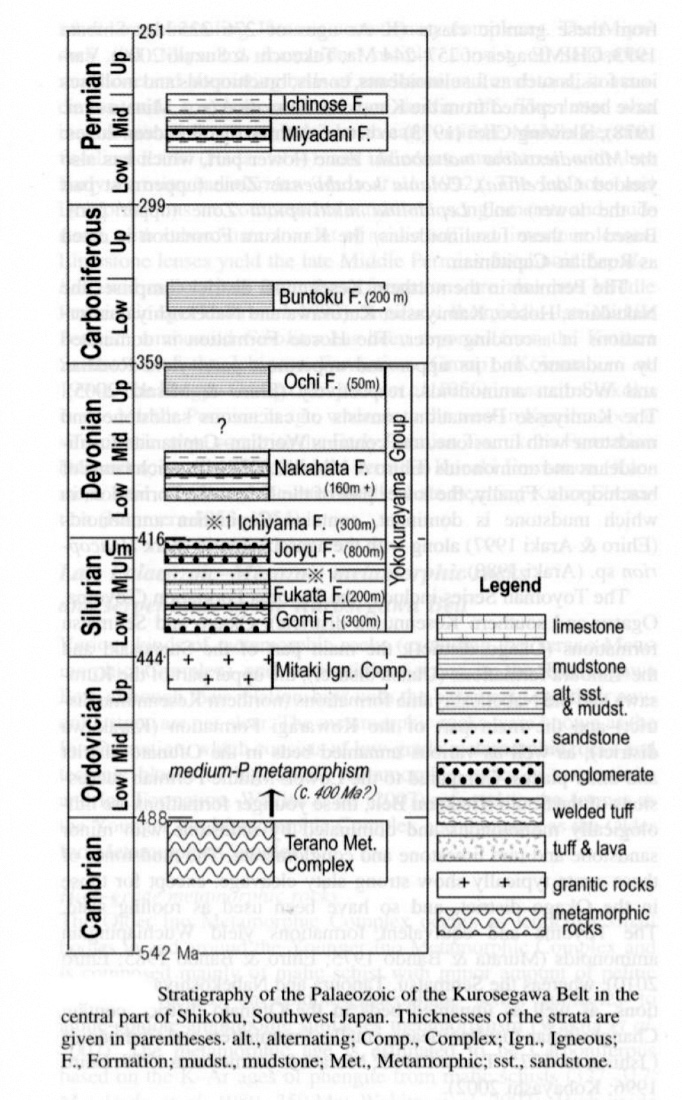Fukata Fm
Type Locality and Naming
Kurosegawa Belt-central Shikoku
Synonym:
Lithology and Thickness
Fukata Fm (Umeda 1993b) is subdivided into a Lower Member, comprising altemating beds of sandstone and mudstone, and mudstone, with calcareous sandstone and conglomerate in its lower and upper parts, and an Upper Member comprising mainly limestone with limestone conglomerate, tuffaceous sandstone and mudstone
[Figure 1: Stratigraphy of the Paleozoic of the Kurosegawa Belt in the central part of Shikoku, Southwest Japan (after M. Ehiro et al., 2016)]
Relationships and Distribution
Lower contact
Regionally, the schematic strat column indicates the next older unit as Gomi Fm
Upper contact
Regionally, the schematic strat column indicates the next younger unit as Joryu Fm
Regional extent
Kurosegawa Belt-central Shikoku
GeoJSON
Fossils
This formation yields late Wenlockian-early Ludlovian corals, trilobites (Hamada 1959c; Kobayashi & Hamada 1985), conodonts (Niko et al., 1989) and radiolarians (Wakamatsu et a1., 1990). The corals are rich in halysitids such as Halysites, Schedohaiysites and
Falsicatenipora, and favositids.
Age
Depositional setting
Additional Information
